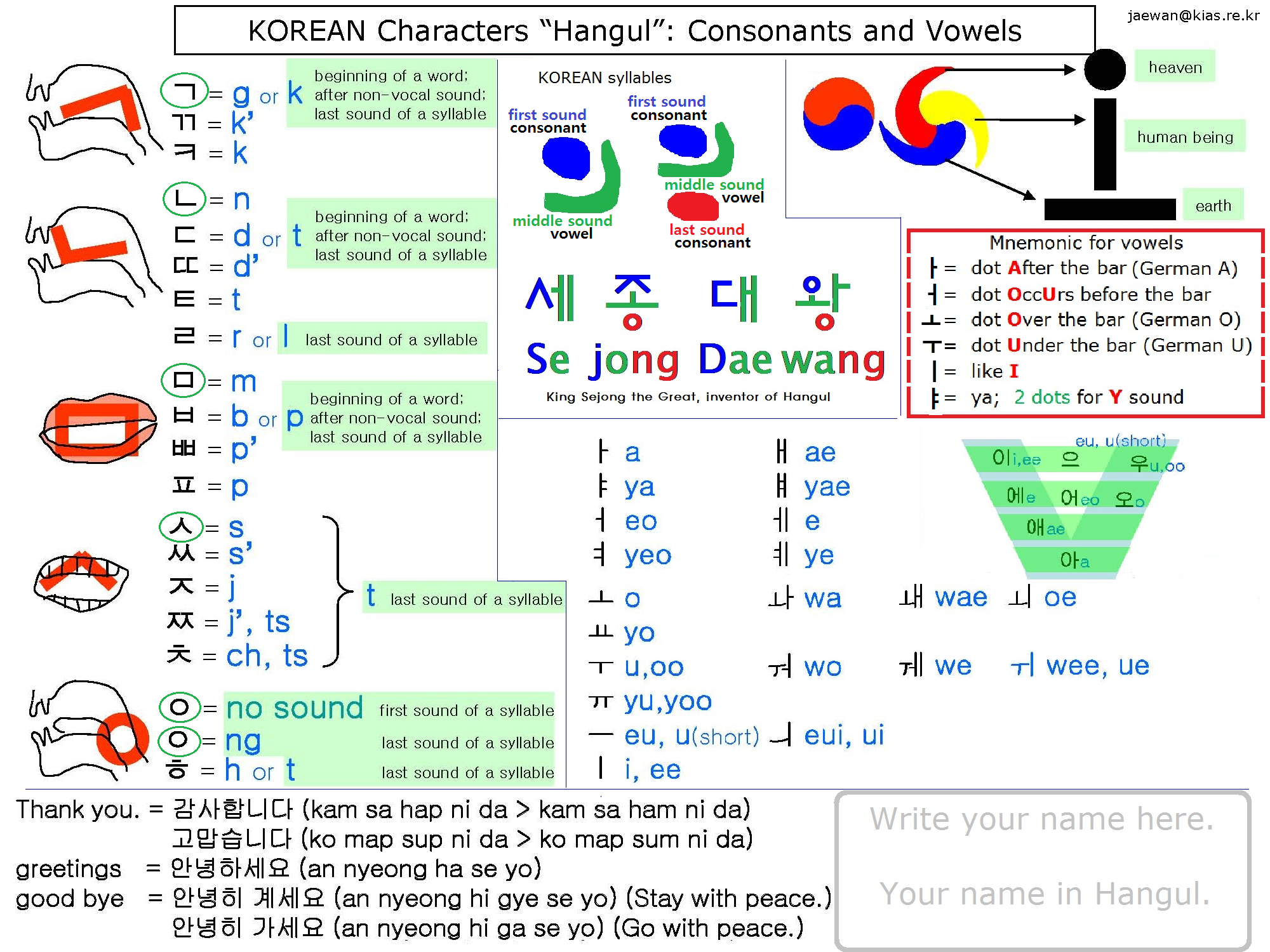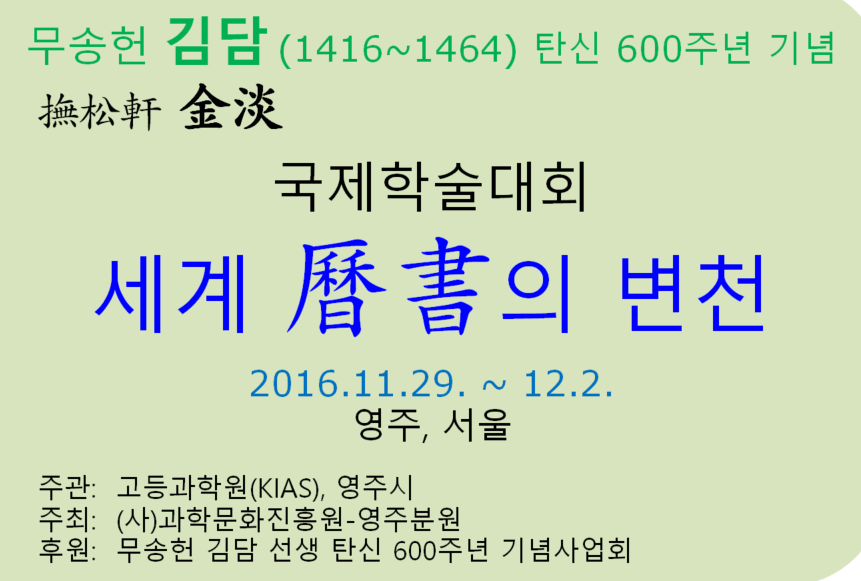Commemoration of the 600th anniversary of the birth of
International Conference on
Nov. 29 ~ Dec. 2, 2016
Organized by
|

| Learn how to read KOREAN | Home > Learn how to read KOREAN |
King Sejong contributed a lot to science and technology and here I present one more of his greatest contribution, invention of Hangul (or Hangeul), Korean Alphabet. Attached is the One-page manual - How to Read Korea Characters (Hangeul), which I have developed last 15 years.
One famous quantum information scientist learned how to read Korean Characters using the earlier version of this just about for fifteen minutes and he could read almost all signboards in Seoul street at his second visit to Seoul. On his third visit, he could write some simple words I say.
Korean letters represent syllables and each syllable is either a combination of one character of consonant and one character of vowel or a combination of first sound (consonant), second sound (vowel), and the last sound (consonant), which is shown in the upper-center of the manual.
Just below that, the inventor Se Jong Dae Wang's name is written in Korean and English so that the formation of Korean letter (syllable) as the combination of sound characters could be understood.
On the left hand side, five groups of basic consonant characters are shown. Each of them are from the shape of sound organs.
On the right hand side, Korean vowel characters are shown.
Three elements -- dot, vertical bar, and horizontal bar symbolizes heaven, human being, and earth in ancient Korean philosophy.
I invented a mnemonic to pronounce each vowel characters.
For example, dot "A"fter the bar sounds like the "A" in German alphabet and dot "U"nder the bar sounds like the "U" in German sound. Two dots adds "y" sound to the vowel. Entire list of vowel characters are shown with their sound values.
At the bottom, simple greetings are shown. Pronunciation of Korean characters has some rules of transform/assimilation. 'p' sound of the previous letter's last consonant assimilates into 'm' sound when it meets 'm' or 'n' sound, which is demonstrated in one of the greetings.
Finally, write your name and ask your Korean friends to write your name in Korean.
Please share it with your friends and enjoy it!


